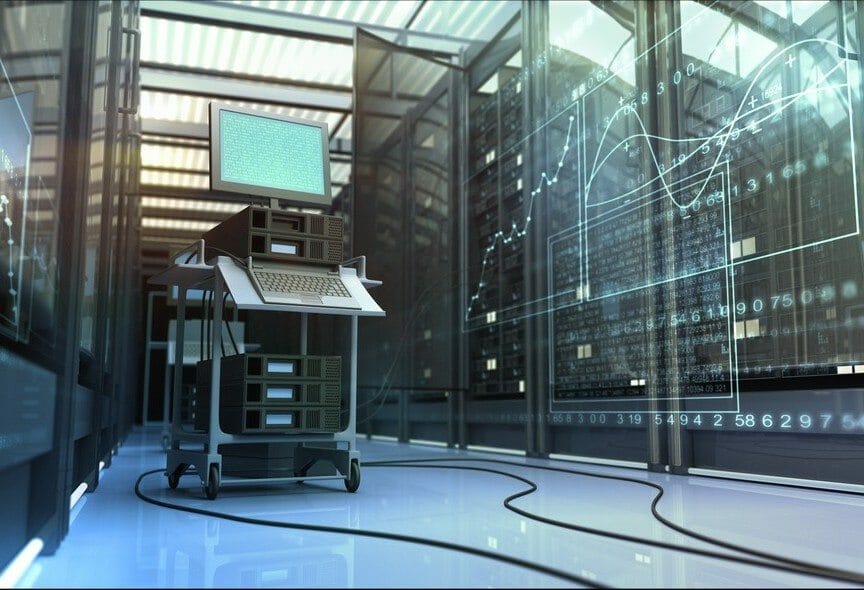Don’t Be Left in the Dark – Data Center Management is Critical10 min read

Your data center is basically a direct part of your business. Those organizations that understand this concept today will be the ones who leverage technology as a direct competitive advantage. Your workloads are critical, your users depend on data center services, and you now directly tie business processes around data center capabilities. So, as your data center footprint expands – how well are you managing it all? What are you doing to create granular visibility into everything from cooling to workload controls?
Don’t be left in the dark, DCIM is much more than the latest buzz acronym to hit the data center industry. Data centers have always been purpose built facilities with lots of complex technology. Managing those technologies has been problematic. At best, devices would have management software but individual software systems could not work together. At worst, blinking lights needed to be monitored in person. The result was a highly tuned system that when it breaks, breaks ugly. DCIM changes that. You have to be able to see everything within your environment and incorporate intelligent monitoring to support your critical architecture. When it comes to DCIM, consider the following four points:
- Everything is connected. Critical infrastructure must work as a system. Devices such as power and cooling delivery need to be connected to a common network to allow for seamless monitoring.
- Sense and respond software. Management software needs to do more than tell you what just happened. It needs to provide trend analysis and intelligence that can identify problems before they happen and solve them.
- Innovation through integration. Look for a data center provider that has in-house software development resources that can integrate disparate software management tools into a robust system.
- Secured portal and reporting. You need to have an online view of your critical infrastructure and the ability to produce reports and trending.
Once you grasp the monitoring and data center management side of things – you have to wrap policies and controls over the metrics you’re seeing. After all, what good is an alert if you don’t know what to do next? Take the time to understand the workloads, applications, and data instances which will are running within your data center. This means classifying the workloads based on their priority. In those situations, it’s important to conduct a Business Impact Analysis (BIA) to truly understand value of various data and infrastructure components. The results of a BIA are very descriptive and indicate which systems should run in high-availability Tier III data centers, for example. Furthermore, it will help determine which systems must have higher uptime requirements versus those with a lower priority. Finally, you’ll begin to understand the actual business ramifications of losing a workload, a system, or even a data center component. How long can you systems survive without a primary cooling system? What if the secondary fails? To that point, know what’s “mission critical” versus “good enough” is important.
- Mission Critical. In conducting a BIA, various components, data elements and hardware equipment may be classified as “mission critical.’’ This means that specific infrastructure must remain up 100%, which requires a highly redundant supporting infrastructure. Recovery times for these components can range from just a few minutes to a few hours. The important thing to remember is that these components are the vital pieces which will keep your business running. During a BIA, recovery times are established based on the impact of those systems going down. By establishing recovery times and planning around them, managers can select a provider which is capable of meeting those demands with their internal processes, infrastructure, and support. Additionally, a good colocation provider will hold concurrent engineering sessions with your IT staff to fully understand the priorities in your IT deployment. They should be able and willing to strategize power circuit deployment to maximize redundancy through the use of multiple UPS systems (greater than the standard A/B power supply mentality).
- Good Enough. Similar to mission critical components, the ‘good enough’ model contains infrastructure pieces which may have longer recovery time objectives. This doesn’t necessarily mean they are any less important, rather, it means that these components can take longer to recover. These environment pieces are also established during a BIA and their recovery times are identified as well.
Your data center is a business engine driving your organization forward. Your users depend on new sets of applications and vast amounts of data to be productive from anywhere. Even with cloud computing and new kinds of distributed services – there will always be a need for physical, data center, resources. The home of all modern cloud systems is the data center. Sometimes, that big fact is overlooked. Our dependence on data center resources will only continue to grow. This is why it’s important to know your mission critical systems and how to manage the most vital components within your data center.

Airflow Management Awareness Month
Free Informative webinars every Tuesday in June.







0 Comments